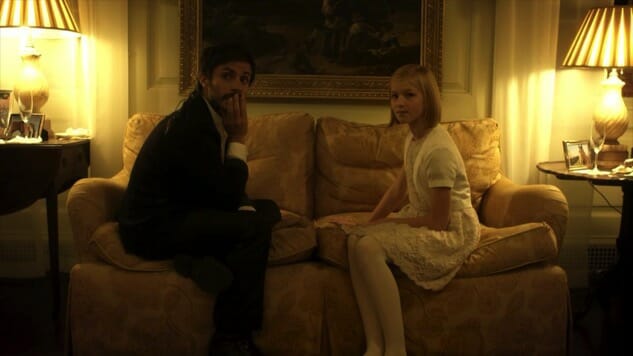“You Go to My Head”: Revisiting Roman Coppola’s Brilliant Mozart in the Jungle Episode

When it comes to television, for the most part we tend to still think of it as a writer’s medium. Whereas in cinema, we often assign authorship of a movie to the director—thus the widely circulated “auteur” theory—in television such authorship tends to go to a creator, who is often a series’ head writer and maybe even executive producer. Even then, though, individual episodes of a series tend to be discussed in terms of its writing and acting: plot, characterization, dialogue, and so on. Visual qualities—cinematography, editing, art direction, etc.—aren’t discussed as much, and in many cases perhaps for a good reason: Within a series’ broader world, it can be difficult for a director to bring his/her personality as much as a writer can do in a given episode, mostly because of the demands to stick to a certain style, keep a serial storyline moving along, and such relatively mundane concerns.
But maybe the tide is turning toward an era of director-driven television, especially with the advent of online streaming. Earlier this year, there was Starz’s The Girlfriend Experience, in which executive producer Steven Soderbergh handed two indie filmmakers, Lodge Kerrigan and Amy Seimetz, the reins to come up with whatever they wanted, based on the concept behind Soderbergh’s 2009 film of the same name. Not only did they collaborate on writing all 13 episodes, but Kerrigan and Seimetz alternated directing duties (Kerrigan directed seven episodes, Seimetz six)—and while the deliberately cold and sterile visual aesthetic remained consistent, each episode they directed was distinct, with Seimetz’s episodes exuding a bit more emotional warmth than Kerrigan’s.
One of the most brilliant recent examples, though, of a director cutting through a series’ “aesthetic by association” came in the first season of the Amazon comedy-drama Mozart in the Jungle—specifically, its seventh episode, titled “You Go to My Head.” Granted, this particular installment is unusual in the series’ 20 extant episode in that writers Adam Brooks and Kate Gersten restrict all the action to one setting: a fundraising gala at a fancy estate. But even that relatively claustrophobic set-up doesn’t account for the luminous spell this episode achieves, thanks in large part to the inventive approach its director, Roman Coppola—one of the series’ creators, in the first episode of three he has directed for the show so far—takes in filming the events that occur.
-

-

-

-

-

-

-

-

-

-

-

-

-

-

-

-

-

-

-

-

-

-

-

-

-

-

-

-

-

-

-

-

-

-

-

-

-

-

-

-








































